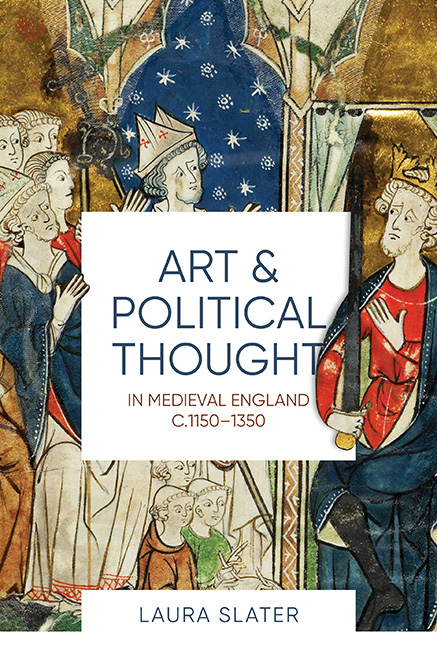Book contents
- Frontmatter
- Dedication
- Contents
- List of Illustrations
- Acknowledgements
- Abbreviations
- Introduction
- 1 Imagining Power in Angevin England
- 2 From the Clerics to the Court, c. 1200–1250
- 3 The Barons’ War and the Dreams of Reformers
- 4 Visions of Government during the Three Edwards
- Conclusion
- Bibliography
- Index
- Already Published
- Frontmatter
- Dedication
- Contents
- List of Illustrations
- Acknowledgements
- Abbreviations
- Introduction
- 1 Imagining Power in Angevin England
- 2 From the Clerics to the Court, c. 1200–1250
- 3 The Barons’ War and the Dreams of Reformers
- 4 Visions of Government during the Three Edwards
- Conclusion
- Bibliography
- Index
- Already Published
Summary
Across the period c. 1150–1350, political life in medieval England was consistently framed as a sharply polarised conflict between vice and virtue. Political struggles between representatives of Church and state, efforts to reform or remake the procedures, bureaucracies and structures of the English monarchy, and to evolve legal and conciliar safeguards against unrestrained royal vis et voluntas, were interpreted as epic crusading battles, played out both on earth and in heaven. As the miracles attributed to Edmund of Bury, Thomas Becket, Simon de Montfort and Thomas of Lancaster declared, not even death could stop English heroes from striving for liberty from tyranny. Frequently influenced by the active intervention of God, the saints and, of course, the forces of darkness that sought to keep the English in a state of sin, subjection and slavery, political problems were magnified by their incorporation into larger spiritual trials, especially individual and collective battles to secure salvation and eternal life, for oneself and one's kin.
Stephen Jaeger has observed that ‘Medieval social criticism in general operates within a two-pronged discourse: one prong skewers the objects of attack on their gross abuses, the other fixes them into codes and norms. The first finds or invents inflated wrongs, the second fashions sublime ideals.’ This stark duality is evident when one surveys the medieval English polity c. 1150–1350 as imagined by its (overwhelmingly monastic or clerical) chroniclers, royal servants and schoolmen.
At the head of the imagined medieval English polity was the king: chosen by God to be his minister and avenging warrior, to ‘walk upon the asp and the basilisk’ and ‘trample underfoot the lion and the dragon’, as the visual imagery found on the English royal great seal from 1218 to 1340 asserted (figures 12, 35, 36). Crowned and anointed by the Church, he was to rule ‘according to the eternal laws of the whole universe, in association with the hierarchy of angels, as decreed by God's eternal wisdom’. Robert Grosseteste's words found a visible echo in the liturgical furnishings and decorative schemes of the English great church: its pulpitum set up with standing images of English kings, ranging from the Anglo-Saxon era to the Plantagenets and beyond (Plate III, figures 18, 19); its ceilings painted with images of holy kings, bishops and saints in harmonious union; and its ceremonies honouring the lives and miracles of English saints such as Becket.
- Type
- Chapter
- Information
- Art and Political Thought in Medieval England, c.1150–1350 , pp. 237 - 240Publisher: Boydell & BrewerPrint publication year: 2018



